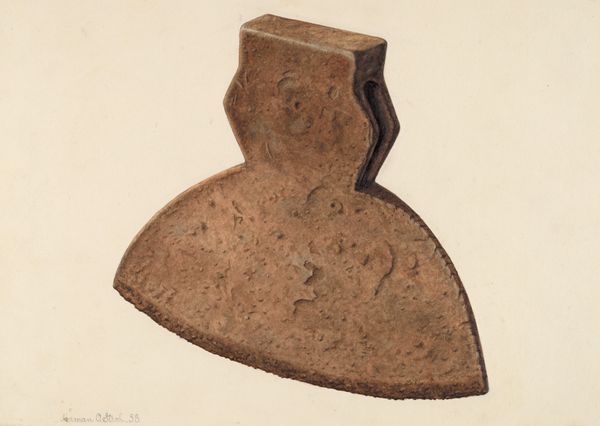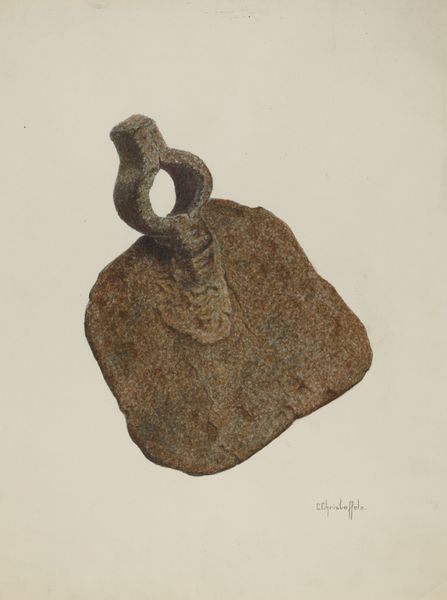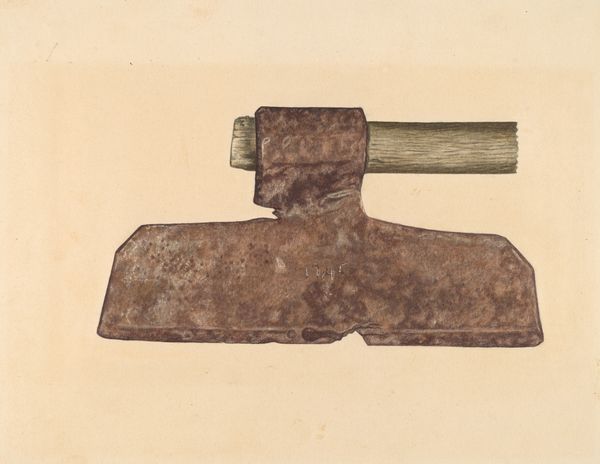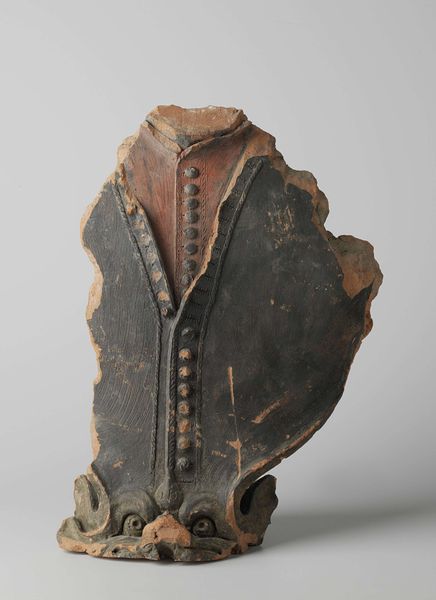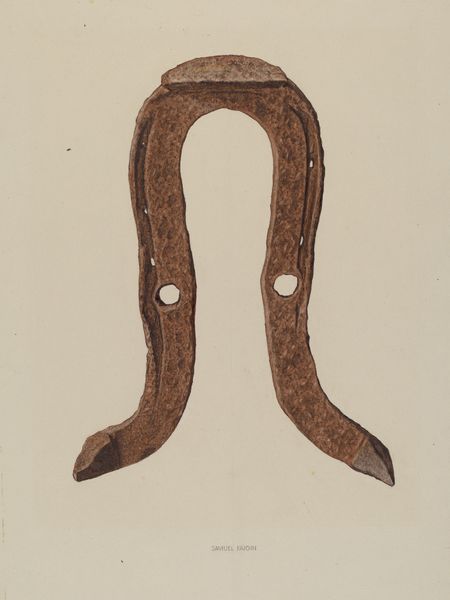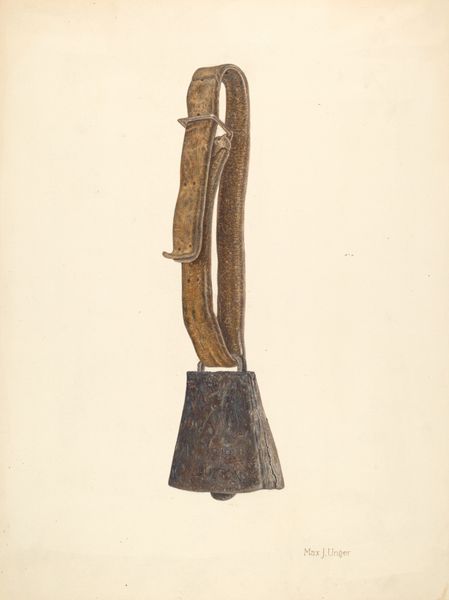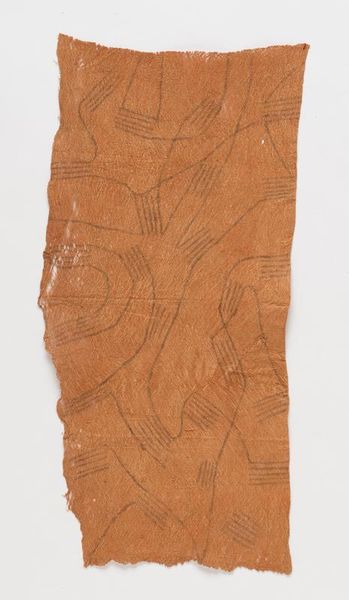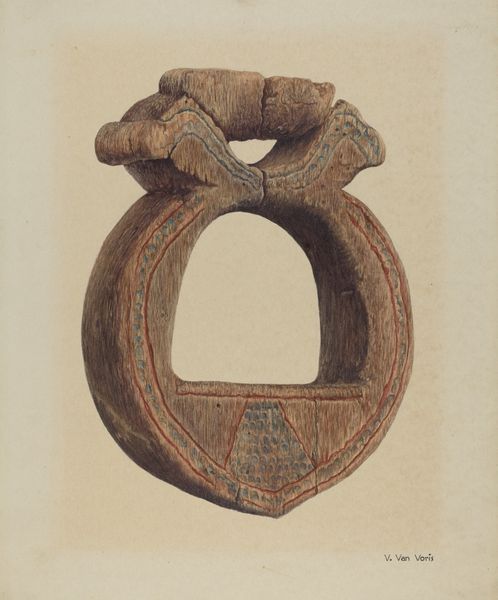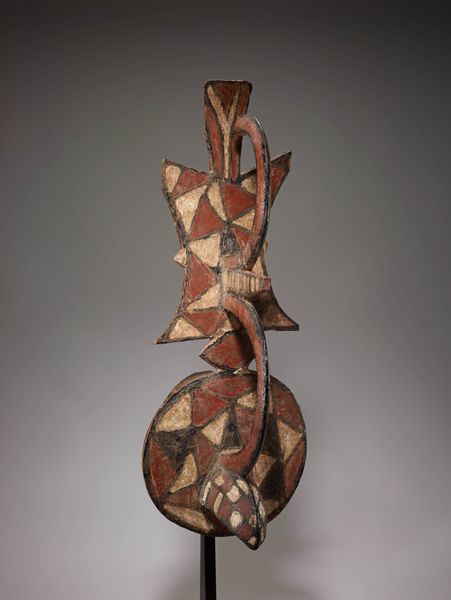
drawing, coloured-pencil
#
drawing
#
coloured-pencil
#
coloured pencil
#
watercolor
Dimensions: overall: 27.9 x 21.9 cm (11 x 8 5/8 in.) Original IAD Object: overall: 12" long; cutting edge: 6 1/2" long; poll: 2 1/4" long; 1 3/8" wide
Copyright: National Gallery of Art: CC0 1.0
Curator: Here we have Harvey Beck's "Ship Builder's Axe Head," a coloured-pencil drawing from 1939. Editor: My first thought is how weathered and time-worn this axe head appears. It speaks of labor, industry, and a bygone era. Curator: Absolutely. Beck created this during a period when the Works Progress Administration was funding artists to document American industry and material culture. There was a real sense of wanting to preserve and celebrate this craftsmanship, this industrial ingenuity. Editor: It feels imbued with the realities of that era, like the grit of the workshops clings to the page itself. I wonder what kind of statement Beck intended with such a mundane subject rendered with such care. Is he pointing to the inherent dignity in labor, in the tools that shaped a nation? Curator: It’s hard not to see it that way, given the socio-political context. But I also think it reflects a fascination with form and texture. The careful rendering of rust and wear elevate the tool from utilitarian object to an almost abstract study. Editor: It strikes me that something like this acknowledges a working-class identity and asserts its place in the canon of art history, which can be so often inaccessible and alienating. Curator: I agree. And there's something incredibly democratic about it too, about dignifying the everyday. An object imbued with traces of people's labor now given center stage within an art gallery. It reminds us of those whose labor created the world around us, especially with that lovely contrast between the pristine page and this aging instrument. Editor: I wonder, could this image also reflect concerns about labor itself during that era of immense industrial transformation? Maybe by celebrating tools from an earlier period of handcrafted labor, it highlights the plight of individuals whose expertise and workmanship become rendered obsolete with evolving technology. Curator: That's certainly a valid reading. In its own way it speaks about changes in the nature of production and the role of workers during that time period, making it a valuable piece of social and technological commentary from its time. Editor: Looking at this work now makes me think about who wielded this axe. Whose hands shaped and maintained this vital instrument of labor? How does an object like this capture echoes of collective identity, and a history of industrial struggle? Curator: Indeed. Art can connect us so powerfully with people and historical contexts, making us re-evaluate the very object or ideas we thought we knew so well.
Comments
No comments
Be the first to comment and join the conversation on the ultimate creative platform.

